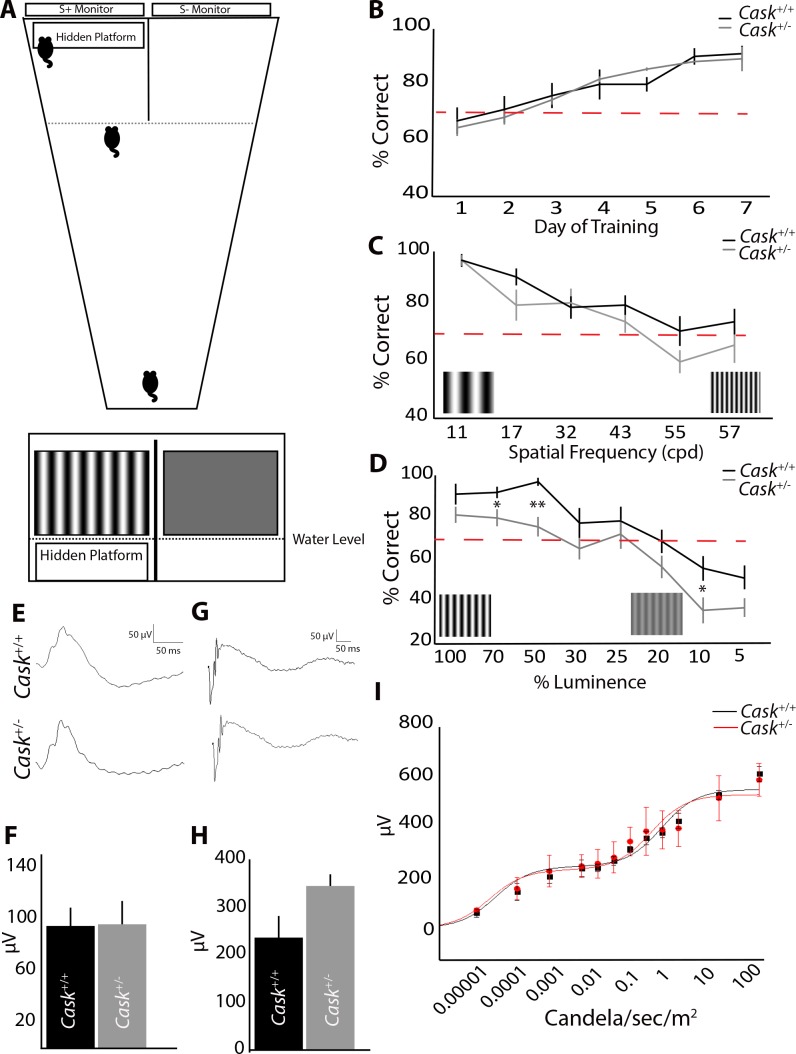Figure 1.
Heterozygous loss of CASK produces behavioral but not electrophysiological deficits in vision. (A) Schematic of two-alternative forced-swim test with a choice between a sine-positive grating (S+) and a sine-negative grating (S−). (B) Cask+/− and WT littermates learn the task at a similar rate. (C) Increasing the spatial frequency of sine-grating leads to similar decrease in Cask+/− and control mice performance. (D) Cask+/− mice perform significantly worse than controls when contrast (% luminance) is decreased. (E–H) Electroretinography in photopic (E) and scotopic conditions (G). n = 3 mice per genotype. There were no statistical differences in photopic b-wave (F) or scotopic a-wave (H) amplitudes. A Naka-Rushton fit of scotopic b-wave amplitudes versus retinal illuminance for maximum rod- and cone-driven responses reveal comparable fits between Cask+/+ and Cask+/− mice (I). For all panels, data are plotted as mean ± SEM. *P < 0.05, **P < 0.01 by 2-way ANOVA.

